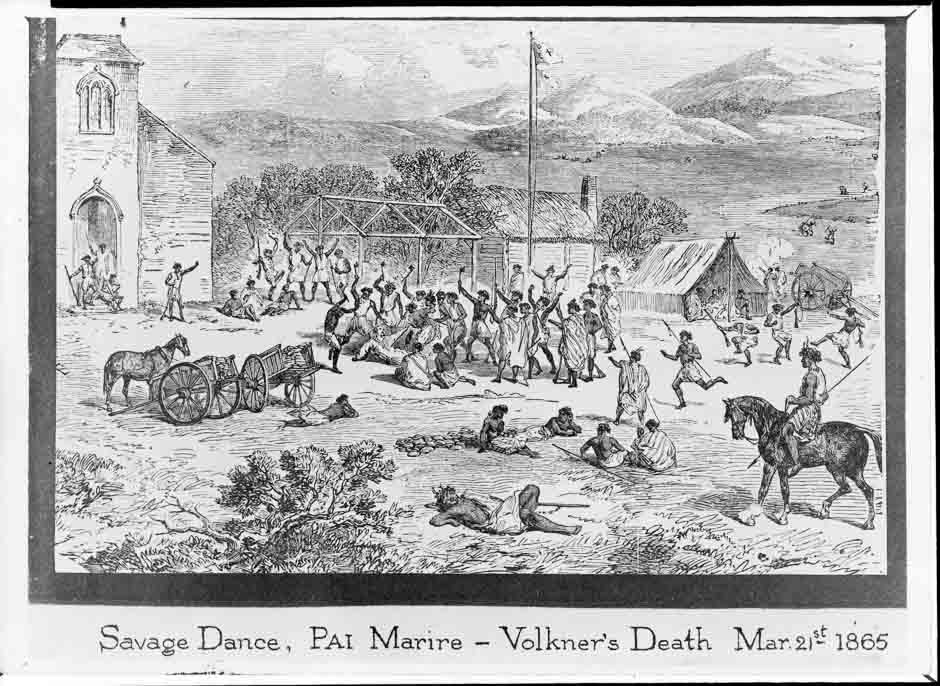
This is the first of a series of blog posts I hope to do leading up to October 28 this year.
This date has been set as the first official day of remembrance for the New Zealand wars of the 1860s.
This day of remembrance is itself something that has been pushed for by Maori radicals whom seek to use this event to propagate their lies/ revisionist history that presents the Maori Rebels (And Maori in general as being the victims of systemic violent Pakeha Greed.
You will note that I have not called these wars by the ‘Politically correct’ name by which they have become known by spoon fed New Zealanders… ‘The Land Wars’… as I know this title to be to be a malicious fabrication designed to mis-direct the New Zealand people away from what the wars were *Really all about* … and what was *Really at stake* back in 1860s… and what is in fact *Really at stake* today.
The real purpose motivating these Activist Maori whom have whom have managed to get the 28th of October to be an official day of remembrance.
If there is at all any good reason for New Zealand to look so far back, and have a Day of remembrance for those events…The Activists certainly dont have these good intentions in mind, yet seek to use this day for very malicious political ends.
Via their twisted re-interpretation of history they seek to propagate greater Racial divisions between Maori and Pakeha… and to use this Dissension to generate fraudulent grievances…. to wrestle more money and power from ‘settlements’.
These Maori have become professional Extortioners… and have Duped the New Zealand people via the Fools and scoundrels in parliament of Billions of dollars.
It grieves me to have to talk about such nasty Machiavellian Political activities that stirs up uncomfortable feelings in people whom have no desire for ill will with their Fellow countrymen of Maori decent… People who would prefer to distance themselves from this ugly business… yet I call upon you to stand with me against the Political lies and malevolence that is being pushed through as Official doctrine, and is having real world effects… not only exacerbating Race relation troubles… not only extorting mountains of Tax dollars… but is changing the very fabric of our society… creating an apartheid system that will be inherited by our children… and unless we stand up for the truth… Our Children themselves will be taught and believe lies.
If that happens it will be because Those of us who know the truth were too intimidated by the controversy we face… to step up to defend both what is true… and what is just.
Not only that, but the reputation of the true Heroes… some of New Zealand’s Greatest defenders… whom fought for the Treaty of Waitangi, against Murderous Tribes in rebellion will forever be spat upon.
I personally find all this unconscionable.
I personally intend to do what what I can to see to it that the lies are exposed, and the Reputations of these heroic and righteous men get their due respect.
These wars were not ‘Land wars’…ie a greedy grab for tribal land by the Pakeha powers!
They were wars of rebellion by Maori Chiefs whom saw Colonization as a threat to their Mana and power…esp as their people began to exit their tribal lands and go live independently , and thus they hatched a plan to get rid of the Treaty, and the British Sovereignty, law and order, and to push the Pakeha back into the sea.
This is what Kingitanga (installing a Maori King) was all about.
And it was these Rebel Maori whom began to prey on the the colonials…and make war preparations conveniently close to Auckland… which they intended to Sack.
I will expand on all this in the following months, and will site my references, yet today I would just like to touch on one particular event that demonstrates what was at stake for New Zealand… and the sort of evils that were poised to devastate this country… and to start to prove that had it not been for bravery of the Colonial forces, Von Tempsky and Forrest Rangers, and later the Armed constabulary, and the Faithful Maori tribes whom preferred the peace of treaty of Waitangi to the tribal wars that were before it… and certainly preferred the Rule of Victoria to the prospect of subjection to a Tainui king… Our history would be completely different.
New Zealand would not be the Great first world Nation… God’s own… that we enjoy today.
All that above is merely my explanation for why I am about to post on a truly horrific murder committed by the Rebel Maori in the mid 1860s… The Hau Hau murder and cannibalism of of The Reverand C.S. Volkner.
We have first hand accounts of what transpired by a Man who was there by fellow Missionary Rev Thomas Grace. (You can find an excerpt by Thomas Grace in Trevor Bently’s ‘Transgressing Tikanga’. The excerpt is verbatum, while Bently’s own commentaries are often blatantly skewed Modern Revisionism… not supported by the records… be warned!)
From Rev Grace’s account we read that Volkner was a Man of high Christian Character and was every measure of what defined the Heroic and Christian Missionary of those times.
He had worked or many years among the Maori at Opotiki whom he loved and worked to bring the Gospel.
His efforts had resulted in a new church having just been erected at the time these events transpired.
Having travelled to Auckland, A band of Rebel Religious Fanatics of the Pai Marire Cult (Hau Hau) had arrived in Opotiki and managed to deceive and corrupt the very Maori whom Volkner considered his friends and brothers and sisters in Christ.
Though having been warned not to return to Opotiki, Volkner displayed the heroic character by ignoring concerns for his personal safety and instead governed by his love of the Maori people of Opotiki determined to run the hazard and return there.
Cautiously He left his wife in Auckland, the plan being she would follow later once The Rev was satisfied the situation was permitting.
There was a War going on, and the murderous Hau Hau had no intention of allowing this influential Christian of high mana to regain the souls of Opotiki for Christ and the Queen, and so these devils conspired a plot for his destruction. Saying he was a spy for the Government to justify his murder.
We can be certain that the accusation was a pure fabrication.
Volkner was hung, decapitated, his blood was drunken, and his eyes gouged out and eaten by Kereopa, thereafter deemed by his friends to be known as ‘The Eye Eater’.
Volkner was a Martyr for Christ and just one of the many Great Anglicans Missionaries who dedicated their lives to the salvation and improvement of the Maori People.
Though born in Germany, and was sent by the North German Missionary Society to Taranaki, Volkner offered his services to the Anglican Church Missionary Society.
Read more here.
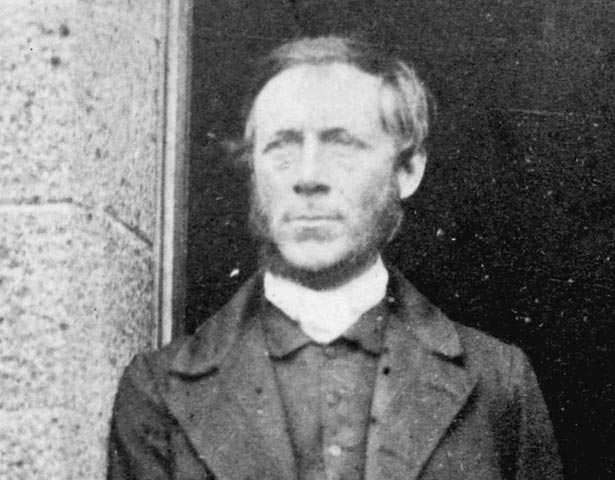
You can read about these events Here.
The following is an excerpt…
HAUHAUISM: AN EPISODE IN THE MAORI WARS 1863-1866
CHAPTER IV. MURDER AND PILLAGE
Previous Section | Table of Contents | Up | Next Section
PAGE 47
CHAPTER IV. Murder and Pillage.
The Hauhaus continued their journey up the Wanganui River until they reached Taupo. The Reverend T. S. Grace was stationed as a missionary at Taupo, and had to flee from his post.1 The apostles Kereopa and Patara, who were now the leaders of the party, began to pillage and murder. They broke into the now evacuated house of Mr. Grace, and promptly appropriated its contents.2 The Maoris at Taupo became converts to Pai Marire, no doubt largely in self-defence from the fanatics.
At Taupo the Hauhaus divided into their two parties as previously arranged. The result was one party reached Opotiki on March 1st, 1865, while the other reached Turanga on March 16th, 1865. These two parties must be dealt with separately.
The party for Opotiki found the tribe at that place already in a state of excitement. The Hauhaus boasted of their successes, and this further inflamed the simmering discontent of the Opotiki natives. The people of Opotiki had sympathised in the Waikato War, and some had taken part. Various circumstances had caused their minister (the Reverend C. S. Volkner)1 to be suspected of being in secret correspondence with the Government on the subject of their disaffection.2
Mr. Volkner had several times visited Auckland. This aggravated the suspicion already current about him. Actually he was continually troubled by the thought of the miserable conditions of his people.3 It was for the purpose of ameliorating their conditions that he made his last trip to Auckland.
On March 2nd, 1865, the Reverends C. S. Volkner and T. S. Grace arrived at Opotiki on the “H.M.S. Eclipse.”4 A Taranaki native named Wiwini immediately went on board and asked Morris Levy, one of the crew, for his Hebrew prayer book. The native pretended to read it and expressed great satisfaction at be-coming possessed of so great a treasure.1 Mr. Volkner’s natives then came on shore to cry for him, because they knew what was going to happen. Shortly after everybody on board the schooner was ordered on shore. On landing Mr. Volkner went up to the people and offered his hand, but no one would shake hands with him. The two missionaries, at the command of Kereopa, were marched off to the Roman Catholic Chapel.2 Finally they were locked in a hut with the sailors. However, Captain Levy, who had piloted the boat, was allowed his freedom, because, being a Jew, he was considered a sort of Hauhau.3
In the evening there was a Runanga (meeting) of the chiefs. It was decided to hang Mr. Volkner, but Mr. Grace was to be kept a prisoner until Patara returned to Opotiki, as Mr. Grace was a stranger to the place.4 The majority of the tribe voted for the death of their pastor, with a few notable exceptions — Tiwai and Te Ranapia.
The following day a number of armed men came, and, after going through some ceremonies in front of the house, called to Mr. Volkner to accompany them. Mr. Grace pressed again and again to go with him, but was forced back and told his turn would come next.1 Volkner was taken away to the Church, where Kereopa dressed himself in the coat and waistcoat of his victim. Volkner was then led to a willow-tree, which was improvised as a gallows. Te Ranapia, seeing the Hauhaus pass, attempted a rescue, but was upset into a deep creek.2 Volkner was permitted to pray, and was then hoisted up. After being suspended for about two minutes he was lowered, and then Kereopa went up and shot him through the body; he was then run up again with a jerk.3 An hour later the body was lowered and the head cut off.4 Mr. Grace describes in his diary for that day the events that followed:—
“The scene where this was done was most dreadful. They were eager to taste his blood, and many rubbed it on their faces. Some of his old friends took part in all this! From my own observance, the people appeared to be half lunatic, and so worked up by their religion as to be ready for any work of the devil.”1
Kereopa carried the murdered man’s head to St. Stephen’s Church, and placed it on the reading desk in front of him, together with the communion cup of the missionary’s blood.2 Kereopa forced out Mr. Volkner’s eyes and swallowed them, and declared that this was a symbol of the way he would deal with the Queen and the Parliament of England.3″
*********************************************
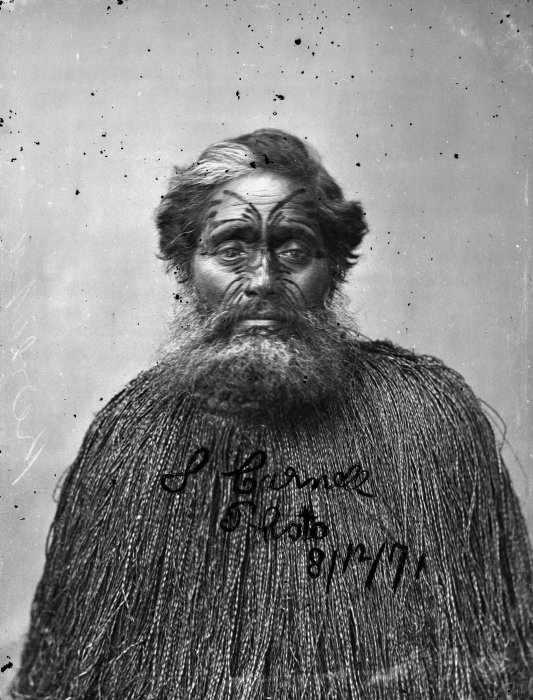
Kereopa Te Rau… “Kaiwhatu: the eye-eater”.
The eating of a chiefs eyes was an ancient Heathen Maori practice designed to prevent the Chiefs eyes becoming Stars in the heavens above.
*************
Now when reading *anything* from the Government University it is important to note that these institutions today are thoroughly infested with Revisionist Academics who *if anything* will attempt to slope such stories in favor of the rebels… Blame the victim… attempt to divert blame… etc etc, yet this horrible event is a fact of our past that clearly demonstrates the particularly diabolical characteristics of the Hauhaus.
Modernists have attempted to downplay these events and the government has caved in to their Revisionism… granting this murderer a pardon along with ‘Treaty settlements’. Read here.
Yet Nothing can undo the Grim facts about the fate of Volkner at the hands of these savages.
Their rebellion embodies an important aspect of what was behind the thinking of Rebel Maori’s in general… and it was not merely a desire to establish Maori Rule… but also a desire to revert back to the savage ways of the Pre-colonial past.
The rebels sought to reject Christianity, and the ethics it had established here even before the treaty via the heroic works of the Christian missionaries…
Nothing Typifies this better than their act of cannibalism… Eating his eyes…Drinking the Volkners Blood from his severed head!
The Hauhau were dangerous lunitics.. adherents to a satanic cult… and incorporated violent Political agenda…
Read here:
The Christian Missionaries via their preaching had basically eradicated this endemic evil by the time of the treaty.
The Rebels wanted it reinstated… yet thankfully… in the Name of The British Monarch… via the Right of Sovereignty ceeded to her by the treaty… The Rebel tribes were confronted and defeated in Battle, and the rest is history!
The Land Confiscations that followed were to punish the rebel tribes… to prevent future rebellions… and all this is in perfect harmony with the Treaty… As Governor Grey had warned before he sent troups… and as Sir Aparana Ngata would later validate…
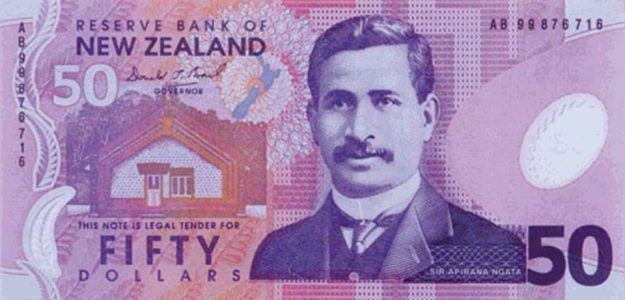
“Let me issue a word of warning to those who are in a habit of bandying the name of the Treaty around to be very careful lest it be made the means of incurring certain liabilities made under the law which we do not know now and which are being borne only by the Pakeha”.
“Some have said that these conviscations were wrong and they have contravened the articles of the treaty of Waitangi, but the chiefs placed in the hands of the Queen of England, the sovereignty and authority to make laws. Some sections of the Maori people violated that authority, war arose and blood was spilled. The Law came into opperation and land was taken in payment. This itself is Maori custom – revenge- plunder to avenge a wrong. It was their chiefs who ceded that right to the queen. The conviscations can not therefore be objected to in the light of the Treaty”.
Extracts from ‘The Treaty of Waitangi, an explanation’ by Sir Apirana Ngata.
****************************
This is sufficient for my first blogpost for the coming Remembrance day October 28 2017.
I leave you with the question…. why do you think these words of Sir Apirana Ngata …one of the Greatest Maori Leaders of all time… are not being taught in our schools and universities?
The obvious and short answer is they dont fit in with the Revisionist Political Agenda being foisted upon us that feeds the Treaty grievance industry and Political separatism that elevates Maori above everybody else… extorts Billions… is supposed to justify Racist laws… and renders all Non-Maori second class citizens.
Will you allow this travesty to go unchallenged… or will you join me and my brave and principled friends in seeing the truth is known… the Heroes whom fought for the Treaty get their due honor… and bequeath a nation in which Racial equality before the law is a constitutional guarantee!
Let us fight for our Country… for true justice … for the future of our children and relegate all the Evils of treaty separatism to the dustbin of history….
Join my Facebook page to discuss these issues and help us make sure the heroes whom fought for the treay against the Rebels get their due honor on the first official day of remembrance 28 October 2017.
You will find us here:
Honoring Gustav Von Tempsky and the Forest Rangers 28 October 2017
Update: I have quit Facebook because of it’s heavy censorship and political/religious bias against Liberty and Christ.
Read:
Tim Wikiriwhi.
Christian Libertarian.
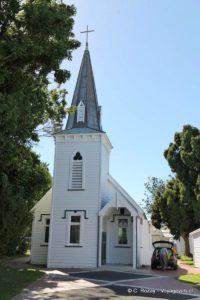
Postscript: If you ever travel to Opotiki, at the eastern end of the town center stands an Old style Anglican Church, St Stephens.
When you walk behind this building there is a small courtyard between another later constructed building. In this courtyard, embedded in the back wall of the Church you will find the Marble gravestone of the Christian Martyr Rev Karl Volkner.

“He Iwi Tahi Tatau”… We are now one people…
Governor Hobson to the Chiefs at the signing of the Treaty of Waitangi.

More from Tim.
The Wanganui River and the incredulous incantations of the Neo-Tohungas…
Tim Wikiriwhi’s Submission to the New Zealand Government’s Constitutional Review. 2013
Mt Everest is for Wimps! Lets Conquer Apartheid Government in New Zealand! A strategy.
Universal Pride in Washington, Separatist Shame in Wellington.
Trojan Horse: The UN Separatist Declaration of Indigenous Rights.
My speech for the 1Law4all party 2014 AGM. Tim Wikiriwhi. 17 June. Hamilton

I suggest you get the relative subject pronoun who right. You keep every time saying whom when you should say who. An important point which the academics will take advantage of. If you don’t know the rule, it is best to just every time say who.
Peter Hemmingson TAINUI TOFFEE
As outgoing Governor-General, Lord Bledisloe, reminds us in his 1922 farewell address: “In the Kingdom of the Blind, the one-eyed man is King. And he that does not know his own history is at the mercy of every lying windbag.”
Neither “Land Wars” nor “Maori Wars” accurately explain the basis of the conflicts that race mongers now wish to commemorate in order to further stoke anti-White and race separatist sentiments. These misnomers have been coined and propagated to imply the Crown made unjust war on a collective Maori in order to “steal” their land.
The war was in fact between the Crown and specific tribes, who challenged the Crown and lost. The Crown then punished these groups with land confiscations as it had earlier warned it would do if they didn’t lay down their arms and cease their provocations.
The tribes on which the Crown waged a series of localised wars between 1863 – 1878 were predominately based in the centre of the North Islam (Tainui, Tuwharetoa, Tuhoe) and had never signed the Treaty of Waitangi in the first place. Under the legal doctrine of privity of contract, only the parties to an agreement are bound by it or can claim its protection in the event of a breach. So no Treaty breach there.
The Tainui tribes set up a “King” as a rival sovereign to the Crown and drew a handful of other tribes outside the immediate locality who HAD signed the Treaty into joining them. The Kingite Movement was thus made up of aggressive challengers to the Crown’s sovereignty and rebels against it.
The ensuing wars were brought on by a minority of Maori Chiefs who saw colonisation as a threat to their mana and power, especially as their people had begun to exit their tribal lands in order to live independently close to the larger cities and towns. A plan was hatched by the dissident chiefs to get rid of the Treaty, British Sovereignty, law and order, and to drive the Pakeha out once and for all.
“Sovereignty Wars” is the correct description of these conflicts, since they were undertaken both to extend the Crown’s sovereignty over those who’d never acknowledged it, and to bring those who’d rebelled against it to heel.
Crown troops entered the Waikato in 1863-64 after numerous provocations from the Kingites that began several years before.
A number of Taranaki chiefs had in 1854 formed an anti-land selling league. Its ability to intimidate others who hadn’t joined the league was preventing local chiefs who wished to sell land they owned to the Crown from exercising their Treaty right to do so. In 1860, the Crown negotiated the sale of the Waitara Block with Teira, its legitimate owner. Wiremu Kingi acting as the head of the land league intervened to block the sale. The Crown upheld Teira’s right to sell.
Since the Kingite agenda was to resist further land sales and settler encroachment because they wanted the settlers gone altogether, this was manna from Heaven. After fighting erupted at Waitara on 17 March 1860, Kingite war parties travelled to Taranaki to meddle in a fight that was none of their business, in the hope of igniting a more general uprising against the Crown’s authority throughout the North Island. As John Gorst reports in “The Maori King:” “It became the fashion for all the adventurous [Waikato] men to spend a month or two in the year at Taranaki, ‘shooting Pakehas.’”
Governor Thomas Gore Brown convened a month-long conference of around 200 chiefs at Kohimarama, Auckland, starting 10 July 1860, to confirm support against the Waitara rebels and to isolate the Kingites. Of the attendees, the only ones who endorsed Wiremu Kingi’s position in the Waitara Affair were his own relations.
Faithful Maori chiefs made it clear they preferred the peace of the Treaty of Waitangi to the murderous tribal wars that preceded it, and would hold to rule by Queen Victoria over the prospect of subjugation to a self-anointed upstart Tainui “king.”
The Kingites subsequently developed two plans of attack on Auckland, one involving a night attack in which the town would be set on fire in a number of places by Maori who’d taken up residence there for that purpose. Their stated intention was “to drive the Pakehas into the sea.” Before any such uprising could occur, the government issued an order on 9 July 1863 requiring all Maori living north of the Mangatawhiri River to take an oath of allegiance to the Crown and surrender their weapons. Those refusing to do so were required to retire to the Waikato. A further proclamation dated 11 July 1863 warned that those who waged war against the Crown would have their lands confiscated.
Crown troops crossed the Mangatawhiri River on 12 July 1863. Maori who refused to take the loyalty oath were evicted as the soldiers advanced. Fighting occurred at Meremere, Ngaruawahia, Rangiaowhia (southwest of Cambridge) and at Orakau (near Te Awamutu) during 1863 and 1864. The final military action of the Waikato War was on 2 April 1864, at Orakau. A proclamation confiscating land was issued in December 1864 under the New Zealand Settlements Act 1863.
The Kingites formally sued for peace in 1865, though sporadic guerrilla warfare waged by small bands of dissidents hiding out in Tuhoe country continued until the late-1870s.
A total of 619 anti-government Maori were killed in fighting in the Waikato and Bay of Plenty from 1863–1864, while 162 British troops and settler militia, settler non-combatants, and pro-government Maori lost their lives.
The confiscated Kingite territory initially comprised 486,501 hectares, including virtually all of Waikato north of a line drawn from Raglan to Tauranga. The Crown’s intentions were twofold. Firstly, to defray the cost of what had been an expensive war it hadn’t wished to wage in the first place. Secondly, the Crown intended to put settlers with military experience onto land in a buffer zone to be created between Auckland and the Waikato against a renewal of hostilities by the Kingites.
Peter Hemmingson
Approximately 127,218 hectares were prior to 1873 returned to Waikato Maori who were judged not to have rebelled. The final confiscations totalled 359,283 hectares. It should be noted that nobody was turned off land that he identifiably occupied or cultivated. Large tracts of “waste land” with no identifiable Maori owners –“Crown Land” of the Kingites being the best description of it – was simply Gazetted as Crown Land, meaning all neighbouring tribes actually lost was the opportunity to turn land they didn’t own anyway into cash at some future point in time.
Once peace was made, the Kingites were treated as British subjects, a far more benevolent fate than they’d have suffered had they been conquered by another Maori tribe, and indeed considerably better treatment than the Tainui tribes had meted out to others during the Musket Wars of the 1830s.
Nonetheless, for around 70 years, Tainui kept up an avalanche of complaints and petitions that the land confiscations were both wrongful and excessive. Eventually, the Labour Party buckled to this pressure, and gave them something to keep Princess Te Puea and the Kingites in the tent for Labour.
In 1946, after what one commentator at the time referred to as “the biggest and most representative hui of the Tainui tribes ever held,” the Crown and Tainui signed the Waikato-Maniapoto Settlement Claims Act, the preamble of which read: “The purpose of this Act is effect a full and final settlement of all outstanding claims relating to the raupatu confiscations …”
I call that a done deal.
Yet Waikato-Tainui were handed a second full and final settlement of $170-million in 1995, on the basis of what the Waitangi Tribunal asserted were “Treaty breaches,” despite never having signed the Treaty of Waitangi.
This settlement specifically excluded further claims that Tainui might mount over the Raglan, Kawhia, and Aotea Harbours, and to the Waikato River, so that one wasn’t “full and final” either.
The 1995 settlement went around the various Tainui subtribes for ratification, and was eventually endorsed by around 2/3 of the marae in the Waikato. A kaumatua at one of the dissenting marae famously told the New Zealand Herald at the time: “We do not see this as a full and final settlement, because who can anticipate the needs of future generations. To bind future generations like that is not the Maori way.”
And [part-] Maori continue to assert that the Crown has no honour …
ENDS
Good post, keep
You have a number of alternative facts in this and other of your posts. People would assume that you would have researched the topic well, so would take it for granted that everything you write is correct. Wrong!
For one, some tribes within Tainui did sign the Treaty. Nor were there were planned attacks on Auckland. It was scaremongering in order to justify an invasion to show superiority and to obtain land.
The institution of the Kingitanga was a way of unifying tribes in order to hold onto land, their economic base, so that all Mäori could prosper. They were in fact very prosperous at that time so there was no reason to attack their major market.
The Land Wars are what took away Mäori prosperity and it has never returned. The government has since apologised for that wrongful invasion.
You really need to do better research because there are many other things that you have got wrong. Too many to comment on here. However, I do realise that the audience you preach to doesn’t care if it’s wrong.
You seem intelligent enough so I was wondering why you would have such a strong distaste for Mäori. Then when I read what you wrote about your father I realised that you are taking it out on all Mäori.